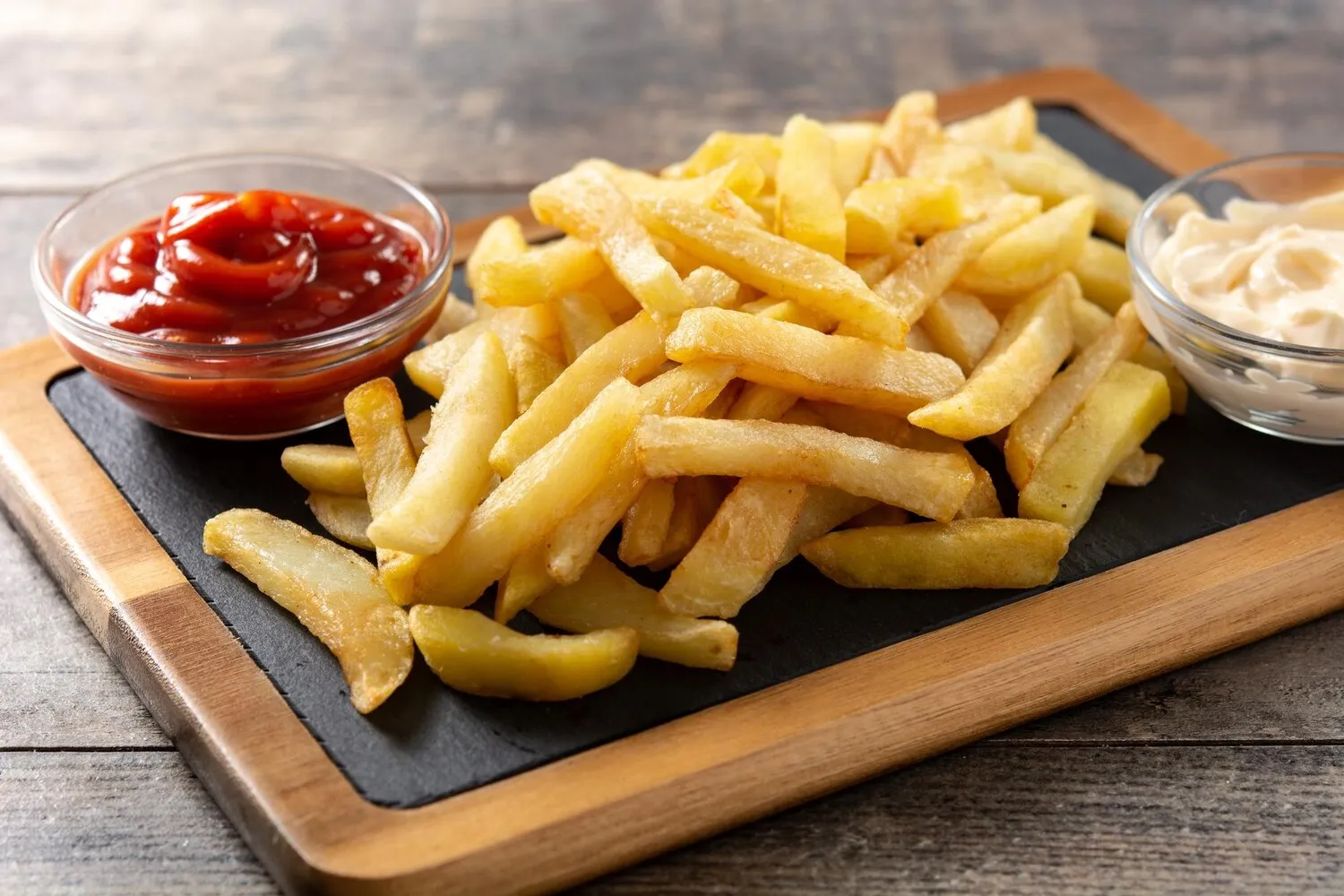
Macaxeira Frita
Fried cassava, a common side dish in Northeastern Brazil, often served as a substitute for french fries.
Nutrition Facts
* The % Daily Value (DV) tells you how much a nutrient in a serving of food contributes to a daily diet. 2,000 calories a day is used for general nutrition advice.
Salute Comedoria
Cassava, also known as mandioca, yuca, or macaxeira, is indigenous to South America and has been a staple food for centuries. Its use in Brazilian cuisine predates European colonization. Fried cassava, or Macaxeira Frita, likely emerged as a way to utilize the abundant cassava crop and adapt traditional cooking methods.
Macaxeira Frita holds a significant place in Brazilian cuisine, particularly in the Northeastern region, often functioning as a versatile side dish and a popular alternative to french fries.
Regional Staple
In Northeastern Brazil, macaxeira (cassava) is a fundamental part of the diet. Macaxeira Frita is a common and affordable snack or side dish, readily available in restaurants, street food stalls, and homes.
Social Gathering Food
It is often enjoyed during social gatherings, barbecues (churrascos), and informal meals. Its simple preparation and satisfying taste make it a crowd-pleaser.
French Fry Substitute
Macaxeira Frita is frequently used as a substitute for french fries, offering a local and culturally relevant alternative in Brazilian cuisine. It is served as an accompaniment to various dishes, similar to how french fries are used in other cultures.
Macaxeira Frita offers a simple yet satisfying flavor profile: subtly sweet and nutty cassava balanced by the savory crunch of being deep-fried.
The dominant flavor is that of the cassava itself – a slightly sweet, nutty, and earthy taste. The deep frying process enhances these flavors and adds a satisfying crispy exterior. The inside remains soft and starchy. Often served with salt, it can also be paired with dipping sauces like ketchup, mayonnaise, or regional Brazilian sauces such as molho de pimenta (hot sauce).
Choosing the Right Cassava
Select fresh, firm cassava roots. Avoid those that are soft, discolored, or have cracks. Fresh cassava will yield the best flavor and texture.
Proper Boiling
Boil the cassava until it's tender but not mushy. Overcooked cassava will become difficult to handle and fry properly. Test with a fork – it should pierce easily but still hold its shape.
Double Frying (Optional)
For extra crispiness, consider double frying. Fry the cassava once at a lower temperature (around 325°F/160°C) to cook it through, then again at a higher temperature (around 375°F/190°C) to achieve a golden-brown color and crispy texture.
Drying Thoroughly
Ensure the boiled cassava is thoroughly dried before frying. Excess moisture will cause splattering and prevent it from becoming crispy. Pat the cassava dry with paper towels.
Explore additional Side dish dishes and restaurants
Explore Side dishDiscover top dining spots and culinary experiences in Caruaru.
Explore CaruaruLearn more about the food culture, restaurant scene, and culinary heritage of Brazil.
Explore Brazil